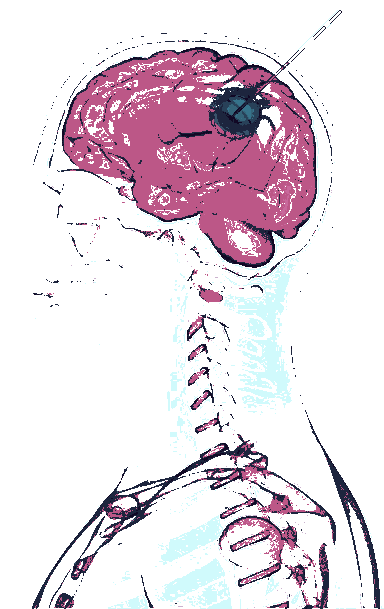
METHOD AND DEVICE FOR PRODUCING A
DESIRED BRAIN STATE
(75) Inventor: Bruce F. Katz, Haverford, PA (US)
5,769,778 A
6/1998 Abrams et al.
5,813,993 A * 9/1998 Kaplan et al. ………….. 600/544
5,954,629 A
9/1999 Yanagidaira et al.
6,266,556 B1
Subject to any disclaimer, the term of this
patent is extended or adjusted under 35
U.S.C. 154(b) by 6 days.
(21) Appl. No.: 09/687,599
(22) Filed:


OTHER PUBLICATIONS
John R. Hughes, et al; “Conventional and Quantitative
Electroencephalography in Psychiatry”; The Journal of Neu
ropsychiatry and Clinical Neuroscience, 1999; 11:2
190-208.
Daniel L. Menkes et al., “Right frontal lobe slow frequency
repetitive transcranial magnetic stimulation (SF rTMS) is
an effective treatment for depression: a case-control pilot
study of safety and efficacy;” J. Neurol Neurosurgery Psy
Oct. 13, 2000
(51)
Int. Cl.” ……………………… A61M 2100. A61B 504
(52) U.S. Cl. …………………………………… 600/26; 600/544
(58) Field of Search …………………………. 600/9-15, 300,
600/544, 545, 26-27, 409; 128/897; 607/45
(56)
7/2001 Ives et al.
6,304.775 B1 * 10/2001 Iasemidis et al. ……….. 600/544
(73) ASSignee: Stral Hedonics, Haverford, PA
(*) Notice:
Dec. 3, 2002
References Cited
CE.A Mii. headbangers’; www.Salon.com
Oct. 3, 2000.
* cited by examiner

US 6,488,617 B1
1
2
is given a visual or auditory feedback proportional to the
desired EEG signal. The patient attempts to increase the
level of this feedback in order produce more of the desired
Signal. For example, in alpha feedback, the intensity of a
Sound may represent the degree of alpha present. By con
centrating on raising the intensity of this Sound, the patient
thereby indirectly increases the intensity of the degree of
alpha present, and presumably thereby increases her degree
METHOD AND DEVICE FOR PRODUCING A
DESIRED BRAIN STATE
FIELD OF THE INVENTION
The present invention relates to monitoring and altering
an individual’s brain State. More particularly, the present
invention is directed to the continuous real-time alteration of
the brain State from a less desirable to a more desirable State
of relaxation. U.S. Pat. No. 5,280,793 describes a similar
through the use of multiple magnetic fields and a System
monitoring the effect of the fields. feedback mechanism for the correction of hemispheric
asymmetry in activity levels associated with depression.
BACKGROUND OF THE INVENTION plished with this treatment paradigm. First and most
fundamentally, the method can only work if it is conceivable
that conscious effort can alter the brain in the desired way.
The exact neural dynamics of biofeedback are unknown, but
it is known that conscious effort is localized to Specific areas
of the brain, most likely those of the neocortex. If the right
connections to other areas of the brain that are in need of
change are not present, or are of the wrong Sort, then
biofeedback will not be possible. In short, the situation is
one of a part of a dynamic System attempting to influence the
State of the dynamic System as a whole, which may work in
certain cases, but is less likely to work when large-scale,
and/or long-term change must be effected. Secondly, bio
feedback may be providing duplicate information. For
example, presumably one either knows or can be taught to
pay attention to how relaxed one is. In this case, audible
feedback of the EEG signal may be simply a more complex
method of achieving what can be done with Simpler means.
Most techniques for altering the brain State of a Subject
have concentrated on altering a measure of this State, i.e., the
electroencephalogram (EEG) signal. The EEG is an electri
There are, however, limitations on what can be accom